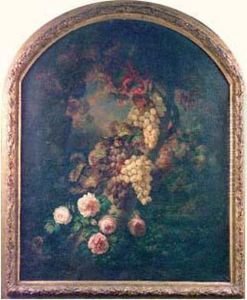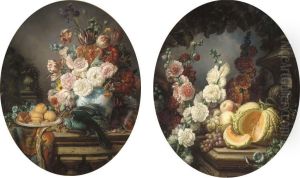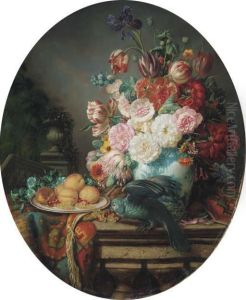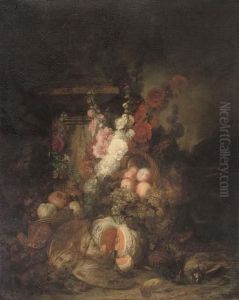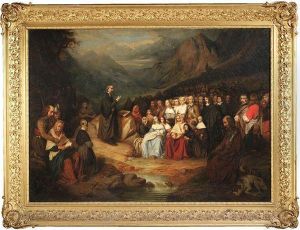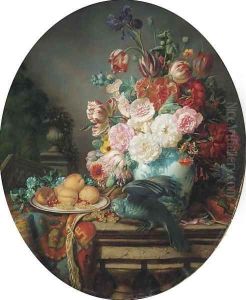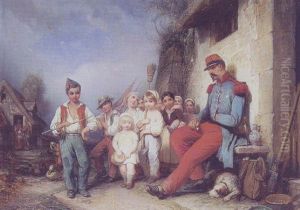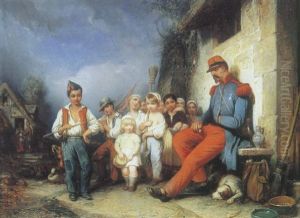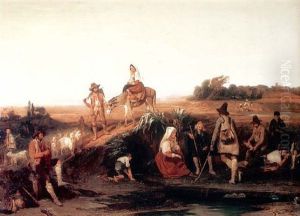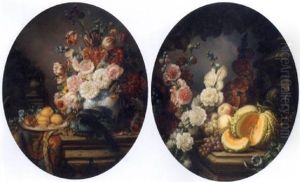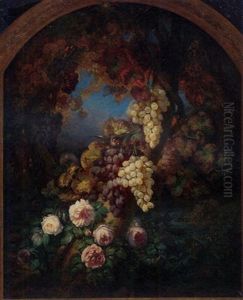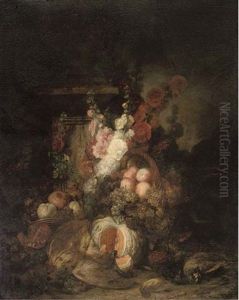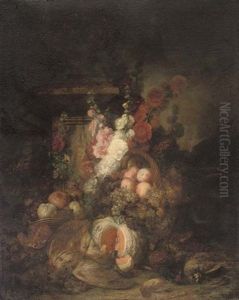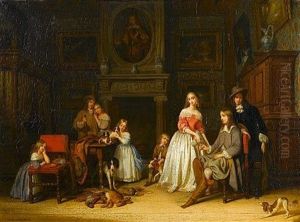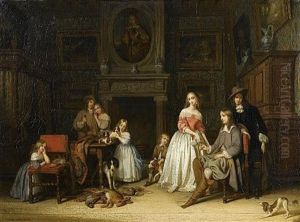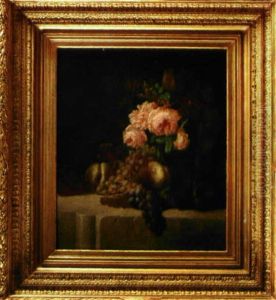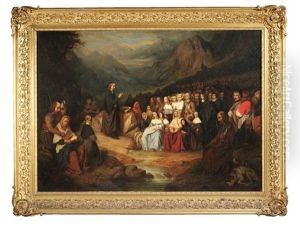Henri-Jean-Saint-Ange Chasselat Paintings
Henri-Jean-Saint-Ange Chasselat was a French painter and engraver born in 1774 in Paris, France. His artistic journey began under the tutelage of his father, Charles Michel-Ange Chasselat, who was also a painter and engraver. This familial environment steeped in art and creativity provided Chasselat with a strong foundation in the visual arts from an early age. He further honed his skills at the prestigious École des Beaux-Arts in Paris, where he studied under renowned artists of the period. Chasselat's early career was significantly influenced by the neoclassical movement, which was dominant in France during his formative years as an artist. This influence is evident in his meticulous attention to form and detail, as well as his preference for themes drawn from history and mythology.
Throughout his career, Chasselat exhibited a profound versatility, excelling not only in painting and engraving but also in illustration. He contributed illustrations for books and was involved in creating designs for theatrical productions, demonstrating his ability to apply his artistic skills across various mediums. His works were exhibited at the Paris Salon, the official art exhibition of the Académie des Beaux-Arts in Paris, where he gained recognition and acclaim.
Despite living through turbulent times in French history, including the French Revolution and the Napoleonic Wars, Chasselat managed to maintain a steady career. His art did not overtly reflect the political upheavals of his time; instead, he focused on classical and historical subjects, imbuing them with a sense of timelessness and universality. Chasselat's contributions to French art were recognized during his lifetime, and he enjoyed the patronage of various important figures in French society.
Henri-Jean-Saint-Ange Chasselat passed away in 1843 in Paris. Although he is not as widely known today as some of his contemporaries, his work remains an important part of the French neoclassical tradition. His legacy is preserved in the collections of various museums and galleries, where his paintings and engravings continue to be appreciated for their classical beauty and technical precision.
